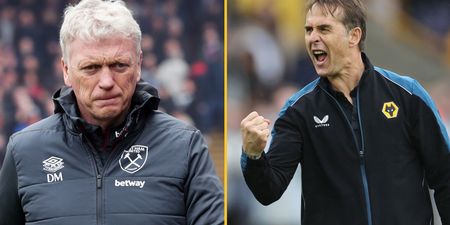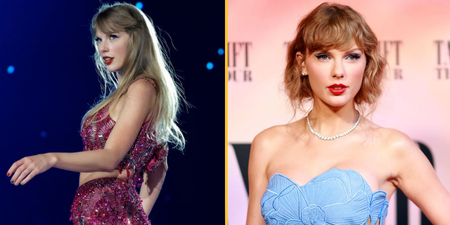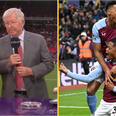Upon leaving the Boleyn Ground for the last time, West Ham United fans were gripped by a new, alien feeling – not knowing what to expect next.
There has always been a sense that a few things will remain constant. The false hope, the emergence of youngsters, and the familiar walk to the stadium for 3:00 on a Saturday afternoon.
That walk has been the same for many fans for years, if not decades. Whether their regular pre-match haunt is the Boleyn pub, within sight of the famous home ground, or one of the ever-decreasing number of pubs in nearby Plaistow, rituals have rarely changed.
Speaking to fans before the final home game in E13 before the move to the Olympic Stadium, it is clear that the sense of not knowing is the most terrifying thing.
West Ham, like opponents Manchester United, are known for passing support down from generation to generation like an heirloom. Before introducing former players for a farewell show, the stadium announcer pays tribute to Mabel Arnold, who attended her first game at the ground in 1934 and her last on Tuesday night.
Lovely to see 100-year old Mabel Arnold at @whufc_official last home game as #WHUFC hammered @ManUtd at Upton Park👍🏻 pic.twitter.com/moENt7KnTI
— David Walker (@djwskyblu) May 11, 2016
About a mile away, in Plaistow, families have been drinking at the same pubs for generations, but even here the cracks have begun to show.
At the Black Lion and the Victoria, crowds spill out onto the pavement outside, as they have done all season.
Part of this can be attributed to the relative success enjoyed this season, with the club spending the entire campaign in the top half of the Premier League table. But for all the positivity around the campaign, the crowds can be attributed at least in part to a less uplifting trend.
Popular post-match pub The Duke of Edinburgh shut its doors in 2014, and other venues within walking distance of the ground have gone the same way since the turn of the century. Landlords have publicly expressed doubts about long-term sustainability once the carrot of regular football disappears – even when the club were in the second tier, there were regular crowds of 30,000-plus to draw upon every weekend – and the promise of shuttle buses to and from the new Stratford home may not be enough.
It’s not like Arsenal’s move from Highbury to the Emirates Stadium, or Tottenham’s imminent revamp of White Hart Lane. Those are right around the corner, barely changing many fans’ regular weekend routines, while the Olympic Stadium is two-and-a-half miles from the Boleyn Ground as the crow flies.
https://twitter.com/DaveSulley/status/725260254812987392
That’s not to say the supporters are set on new watering-holes. Those who I speak to at the Black Lion are considering returning after games at the new ground, and they may do just that when the weather lends itself to lazy evenings in the huge beer garden, where the younger generation can be found enjoying a kickabout on the small patch of grass at the back. But it’s just the wrong side of walkable in those long winter months, when the warmth of Westfield’s bars and restaurants may prove more appealing than gambling that other traditionalists will provide the older venues with the atmosphere they deserve.
So, again, we return to the feeling of uncertainty. Few mention specific Stratford pubs by name, preferring to get a feel for those with the best ambiance when they head to the new stadium for pre-season. The first home game of the 2016/17 campaign – whether in the Premier League or in Europe – will likely involve thousands finding their feet, and the club will hope that is not exacerbated by too broad a change in demographics.
Supporters of other Premier League teams have lamented the loss of their club’s identity following similar moves, with vocal sections of the crowd often split up or priced out.
West Ham claim to have sold more than 50,000 season tickets for their new home, and efforts were made in many cases to keep existing season ticket holders as close as possible to their old seats, but we no longer have the certainty of the fans in the Chicken Run being on their feet singing for 90 minutes each week, or the Bobby Moore Lower dragging their team’s attackers towards the opposition goal in the second half like a cockney magnet.

There seems to be a broad acceptance that the club needs to up sticks to keep pace with their Premier League rivals, but words like ‘I suppose’ and ‘I’ve come to accept’ act as caveats even among those who have broadly come to terms with the move as A Good Thing.
They have already had recent experience of pragmatism with the appointment of Sam Allardyce, whose percentage-based approach was atypical of ‘The Academy of Football’ but presented as a necessary evil to return to the Premier League following relegation under Avram Grant in 2011.
One can’t help but think the dry chants of ‘We’re West Ham United, we play on the floor’ which greeted Big Sam’s tactics could be replaced by similarly sardonic sentiments about the atmosphere, but even that would feel like an acceptance that, while the fans can acknowledge their hesitance about the changing times, that’s the limit of their powers.
Resistance to change is only natural, but fear of a complete unknown adds another layer of doubt. West Ham fans have dealt with plenty of chaos, though, and they will hope the latest chapter finds a way of sorting itself out, just as everything has done in the past.















































